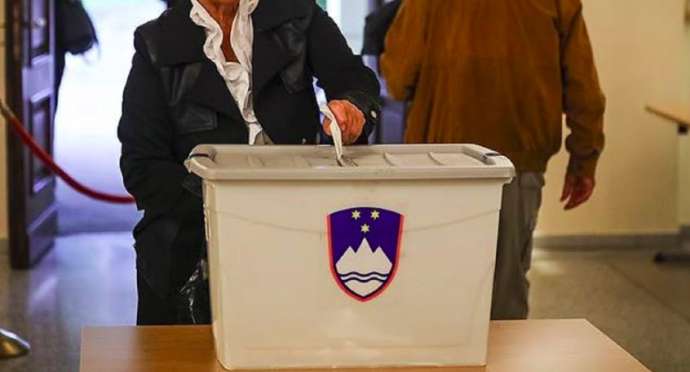STA, 27 January 2022 - With public opinion polls being watched with increasing attention ahead of the April general election in Slovenia, pollsters say most voters make their final choice in the last month, even last week ahead of the election day where swing voters will have main say.
Talking with the STA, Andraž Zorko of Valicon and Nikola Damjanić of Ninamedia say the Slovenian electorate on the whole is as a rule tilted slightly left of centre and can generally be divided into three parts.
One part is engaged, decided voters, part are conscious citizens who turn out regularly at the polls but opt based on political developments each time, while a third group do not follow politics and as a rule do not vote.
It is hard to predict the proportion of swing voters but Matej Makarovič of Parsifal believes their share right now is sufficient for the outcome to remain open until election day.
There are two types of swing voters, swinging between parties and blocs. "The voters who see opposition to [PM] Janez Janša as the key reference point know exactly which bloc they will vote for, but they may be unsure about the concrete party in that bloc till the end."
The last week ahead of the election day will be the most decisive period. This is when polls typically give some general picture of what the result could realistically be.
The political arena is in a state of flux at the moment with new players making their entry such as Robert Golob and Speaker Igor Zorčič each with their own party and a new green party to be founded in February by two high-profile environmental activists.
Mediana's director Janja Božič Marolt says data and results of recent elections show new parties and faces appeal to voters, but it is hard to measure their mark in polls at the moment, in particular if the parties are not yet fully operational and it is not clear yet who their candidates will be.
"If polling attention is drawn to such parties this will be unintentionally at least partly suggestive and the parties' showing will be overrated. If they are not listed and respondents are let respond completely spontaneously, they won't even think of those parties, which will underestimate their result," says Makarovič.
In one such instance Zorko believes that the showings of the Connect Slovenia, an alliance of parties including Economy Minister Zdravko Počivalšek's Concretely and the party of former Maribor mayor Franc Kangler, and Our Land, founded by former Agriculture Minister Aleksandra Pivec, are underrated.
The emerging green party Vesna may also spring a surprise in the election with Zorko drawing parallels to the situation in Austria and Germany where green parties are in government.
Asked what the biggest draw for the voters is, whether personalities, manifestos or vote buying policies, Božič Marolt says experience shows Slovenians tend to become more alert to policies advocated by parties in their platforms when election time draws closer.
Zorko finds headlines, images and populist public appearances rank prominently in the instant consumer society. It thus did not come as a surprise to him when new parties with high-profile figureheads did well in recent elections.
Damjanić says new faces are seen as hope for change although Makarovič notes that "every new face so far has managed to disappoint most of their supporters".
One important factor in this election will be alliances, in particularly given the large number of parties. Zorko sees the centre-right having a competitive advantage there with Connect Slovenia setting out early enough to build an alliance and individual parties in that movement not targeting the same group of voters.
The situation is quite different on the other side of the political spectrum where most parties are vying for the same voters.
He finds the KUL alliance of four centre-left parliamentary parties ill-fated being that it made its bid too early on, and that it comprises the same parties that formed the coalition in 2018 that failed to hold on to power until the end of the term. The centre-left bloc will thus need to consolidate to be able to be a match for the centre-right.
Damjanić sees potential in alliances as well, noting that the centre-left voters who used to vote for Liberal Democracy, Zares and Positive Slovenia are looking for something new.
He does not expect any drastic surprise in the election, but he does believe one interesting development to watch for will be the involvement of civil society movements that could draw younger voters to the polling stations. He says the turnout could be higher than in the 2018 election (52.64%).






